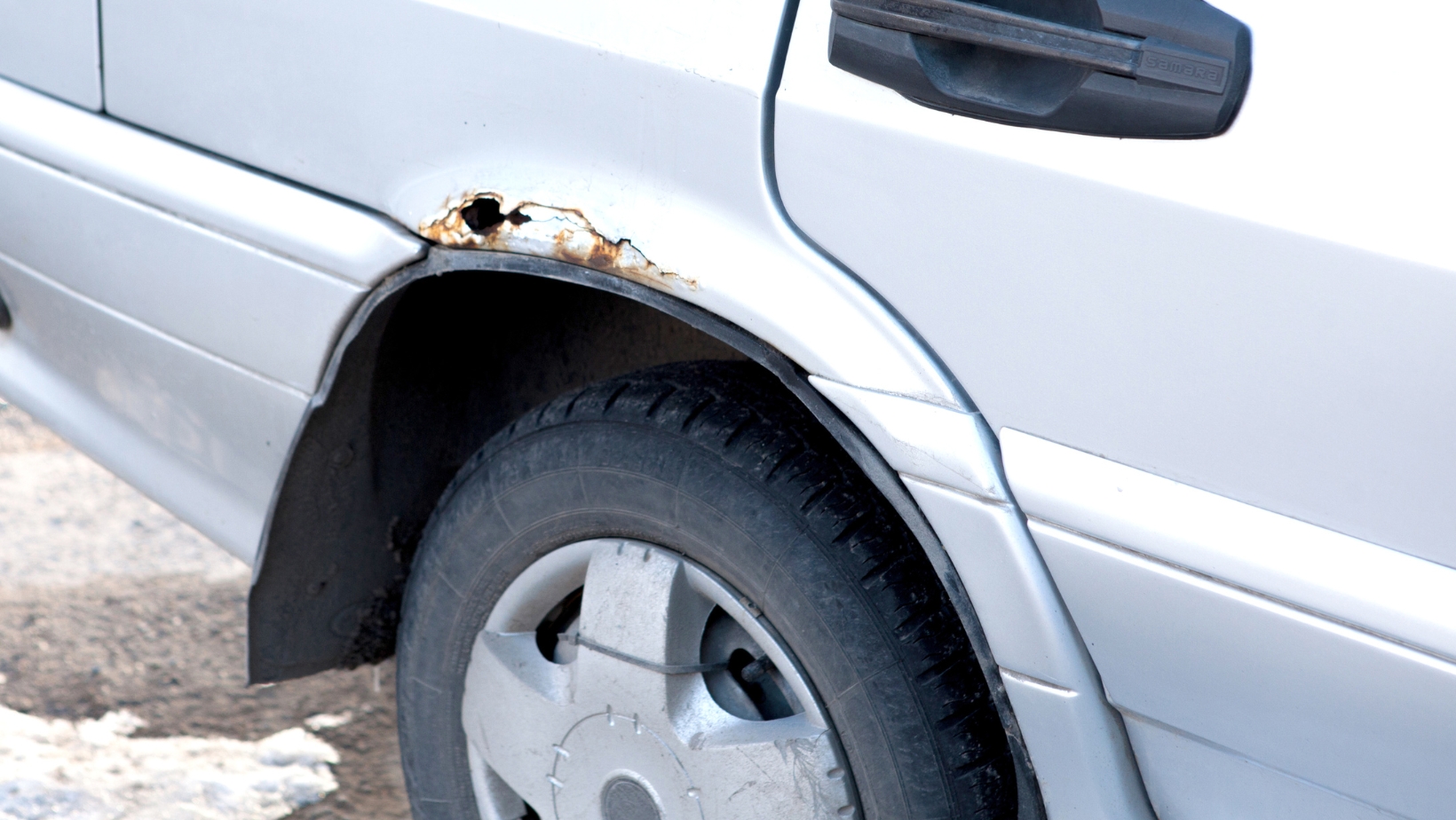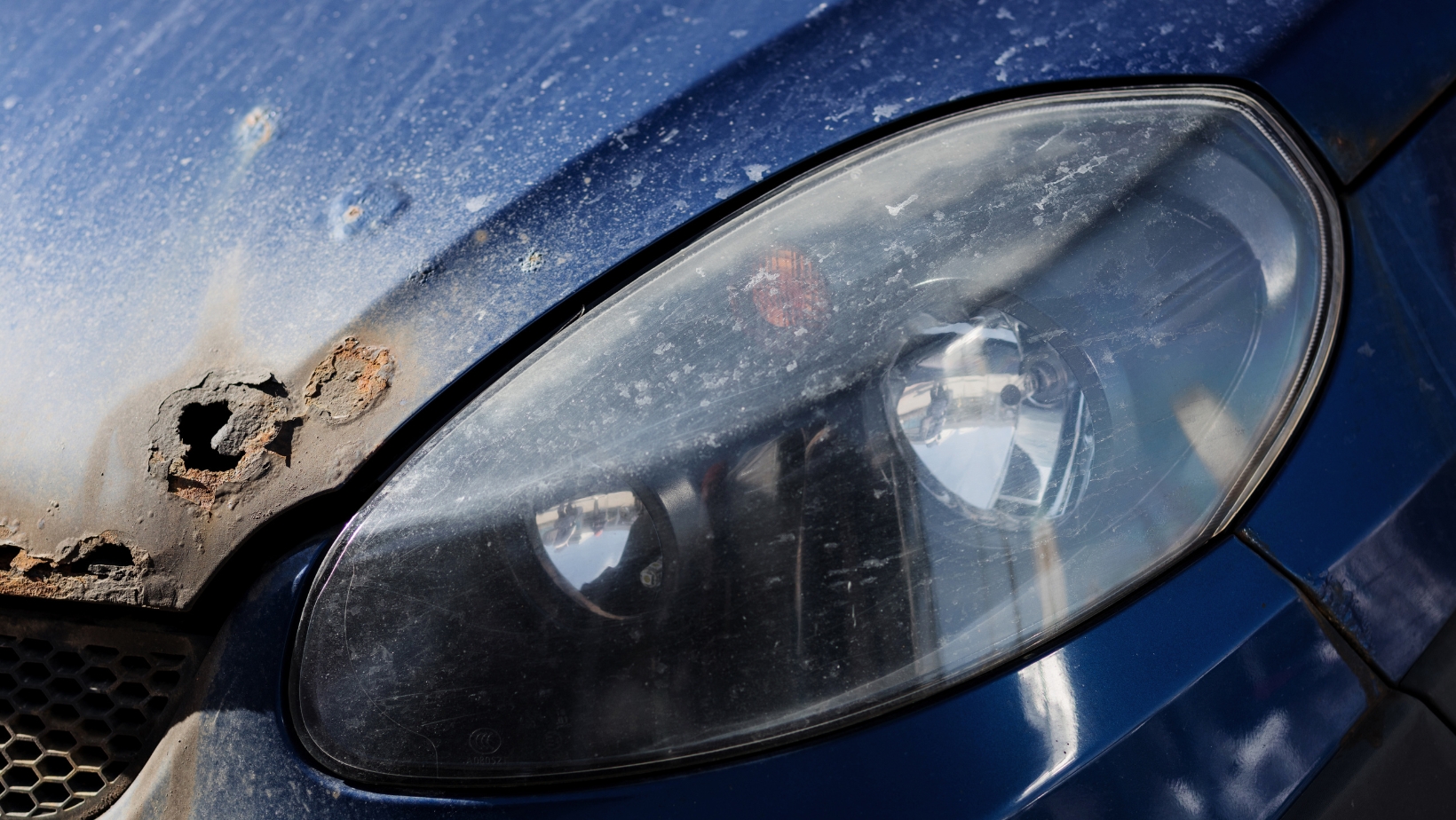Dealing with a rust hole on your car can be quite a perplexing situation. However, fret not, as I’m here to guide you through the process of repairing that unsightly blemish. Rust holes can occur due to corrosion and neglect, but with the right techniques and tools, you can restore your car’s appearance and prevent further damage.
To begin the repair process, it’s crucial to gather all the necessary materials. You’ll need items such as sandpaper, body filler, a putty knife, rust converter or primer, paint matching your car’s color, and clear coat. Once you have everything ready, it’s time to tackle that pesky rust hole.
Firstly, use sandpaper to remove any loose rust around the affected area until you reach clean metal. Next, apply a rust converter or primer to stop further corrosion. After allowing it to dry according to the product instructions, apply body filler over the hole using a putty knife. Remember to shape and smooth out the filler for a seamless finish.
Once the body filler has fully cured based on its recommended drying time, sand it down until level with the surrounding surface. Now comes the exciting part – painting! Match your car’s color precisely and apply several thin coats of paint followed by clear coat for protection and shine.
Repair Rust Hole on Car
Inspecting the Affected Area
When it comes to repairing a rust hole on your car, the first step is to properly identify the extent of the damage. Start by inspecting the affected area closely. Look for any signs of bubbling or blistering paint, as this can often indicate underlying rust. Run your fingers over the surface and feel for any rough patches or areas that seem weakened.
Additionally, pay close attention to areas where moisture is likely to accumulate, such as around wheel wells, undercarriages, and near seams or joints. Rust tends to thrive in these damp environments, so they are prime spots for potential rust holes.
Determining the Extent of Damage
After identifying a potential rust hole, it’s important to assess its size and severity. Small surface scratches or minor corrosion can usually be addressed with simple DIY methods. However, larger holes that have eaten through multiple layers of metal may require professional intervention.
To determine the extent of damage accurately, gently tap on the suspected rusted area with a small hammer or screwdriver handle. If you hear a hollow sound or notice significant give in the metal when pressed lightly, it’s an indication that corrosion has progressed deeply.

Step by Step Guide on Repairing Rust Hole on Car
Repairing a rust hole on a car can seem like a daunting task, but with the right approach and tools, it’s definitely achievable. In this section, I’ll guide you through the process of repairing a rust hole on your car, step by step.
- Assess the extent of the damage: Before diving into repairs, it’s important to assess how severe the rust hole is. Is it just surface rust or has it eaten away at the metal? This will help you determine whether a simple patch-up job will suffice or if more extensive repairs are needed.
- Clean and prepare the area: To ensure proper adhesion and longevity of your repair, it’s crucial to clean the affected area thoroughly. Start by removing any loose rust flakes using a wire brush or sandpaper. Then, use an automotive cleaner to remove any dirt or grease from the surface.
- Cut out and replace damaged metal: If the rust hole is large or has weakened the surrounding metal, cutting out and replacing that section may be necessary. Using tin snips or a cut-off wheel, carefully remove the damaged portion of metal. Once removed, measure and cut a new piece of sheet metal to fit snugly in its place.
- Weld or bond the replacement piece: If you have access to welding equipment and skills, welding the replacement piece is an effective way to secure it in place. However, if welding isn’t an option for you, there are also high-quality automotive adhesives available that can provide sufficient bonding strength.
- Seal and protect: After completing your repair work, seal and protect both sides of the repaired area using an automotive-grade primer followed by matching paint color for seamless blending with your car’s finish.
Remember that repairing a rust hole on a car requires patience and attention to detail. It’s important not to rush through any steps as this could compromise the quality and longevity of your repair job.
By following these steps, you’ll be able to effectively repair a rust hole on your car and restore its appearance and structural integrity.








































